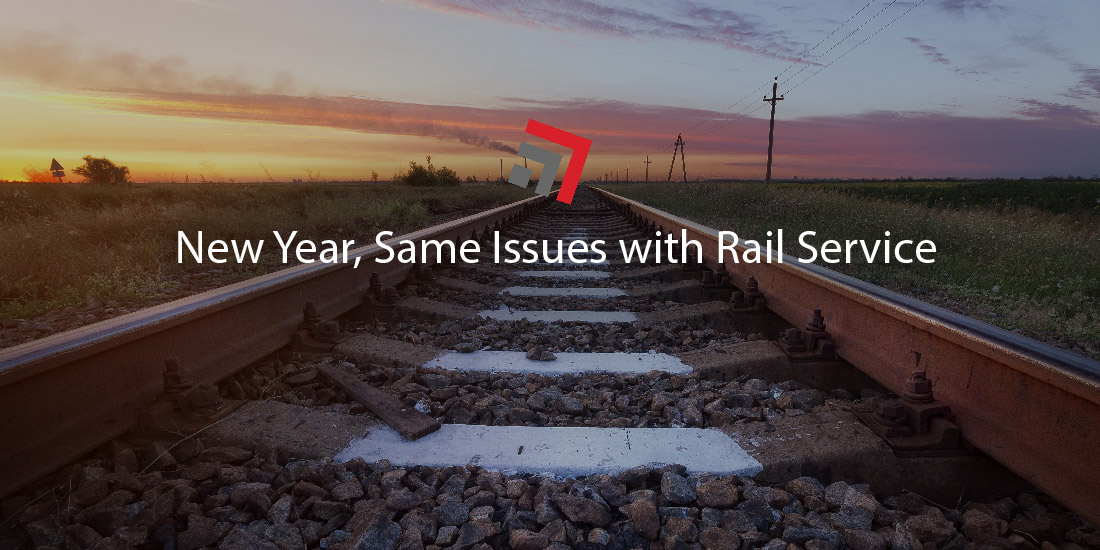2023 has arrived and no matter how magical it may feel putting up a new calendar, drafting up resolutions, and spamming #NewYearNewMe posts on Facebook, the challenges of yesteryear do not whimsically disappear when the clock strikes midnight.
Of course, if anyone wished the changing of years had such powers, it’d have to be the rail industry first and foremost.
An awkward December ending to nearly three-year contract talks aside, rail is far off from being on the same page with all of its stakeholders.
Shippers remain disgruntled with rail service, rail workers are put upon with the new labor contract, railroads are pressured to prove they’re improving service, and regulators are tasked to facilitate this divisive industry.
Altogether, finding resolve for all these issues in 2023 is quite the new year resolution. It’s about as ambitious as your Uncle Larry saying he’s going dry for January, only to grab a Coors Banquet by the time Sunday Night Football turns on.
In other words, these several challenges of the rail industry are not expected to go away in 2023. Even those who are optimistic will reasonably agree there needs to be some sort of big-picture overhaul to observe any dramatic improvements.
The role of the STB
All of that said, keep an eye on the Surface Transportation Board (STB). This federal board has authoritative powers to limit or remove regulatory requirements when appropriate. The STB can play a key role in harboring the varying degree of stakeholders’ sentiments and take any corrective action if needed.
From meditating a dispute between Amtrak and Class I railroads to fielding arguments for and against precision-scheduled railroading, the five member board had its hands full in 2022 and are on par for an even busier 2023.
Rail embargoes and reciprocal switching
A main item following the board into the new year is the highly publicized concern of nationwide rail service. Cases, many of them from shippers, have been brought forward to the STB. Ranging from railroad embargoes (service restrictions) to reciprocal switching, these cases present compelling accounts of railroads not meeting the quality of service that these shippers demand.
Railroads use of embargoes are typically reasoned as a means to control congestion and meter customer-controlled railcar inventory levels. Class I Railroad Union Pacific (which recently paused its embargoes) contests it as a “last resort” measure.
In the eyes of shippers, railroads can run amok with their pricing and, while doing so, are not incentivized to go out of their way to improve service. With only seven Class I railroads, there isn’t much room for a competitive market.
Enter another item—reciprocal switching. Last year, shippers advocated to the STB that reciprocal switching affords access to multiple railroads which may cultivate a more competitive pricing environment. This would allow shippers to gain access to nearby competing railroads at certain interchanges.
While railroads argue that this will make operations more complex and lead to lengthier transit times, shippers remain hellbent on getting the STB onboard with this plan and flex its regulatory muscle.
Reauthorizing more power to the STB
And, while the STB does have a fair deal of authority, shippers, along with rail unions, are also expected to raise the issue in 2023 of strengthening the federal board’s powers. The hope from there is that the board will have reauthorization to revise the Common Carrier Obligation (a federal mandate requiring the railroads carry freight at reasonable terms) and better define service metrics that railroads need to meet.
Additionally, some shippers have also turned to Congress as an alternative measure. In theory, the above gripes they have could also be answered to with legislation.
Final Thoughts
A lot of pressure is applied on railroads to make purposeful changes to their services. While many will say railroads have no incentive to do so, a decision to refrain from improving service is not sustainable for them in the long run.
Rather, steady and intentional actions over time from railroads can hopefully bridge this growing distrust shippers have with them. With low freight volumes and relatively less congestion, no time is greater than the present to start.
Shippers will likely be receptive if railroads raise their rates if it means a higher quality of service is being offered.
Please contact us if you have any questions regarding this topic or any others in domestic logistics.
This is an everchanging industry. Stay current on rail and trucking developments with our weekly Road Map Newsletter.



Recent Comments